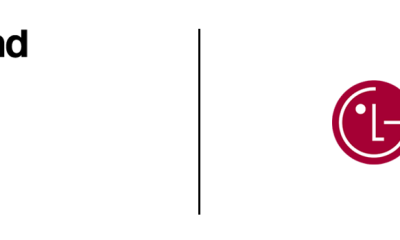Governance
New trade pact leaves most U.S. industry at mercy of Mexico’s courts

NEW YORK/MEXICO CITY – 22 October 2018: The new North American trade agreement ends key legal protections for many U.S. businesses operating in Mexico, leaving their operations exposed to a risk they had avoided under the old trade deal: Mexico’s court system.
For thousands of U.S. firms, the change could add complications and uncertainty to doing business south of the border. Mexico is the third-largest U.S. trading partner.
The previous trade agreement, NAFTA, included provisions that gave U.S. firms operating in Mexico and Canada the option to challenge government decisions at an international tribunal.
A change in Mexican or Canadian regulations, for example, that had a material impact on a U.S. firm’s operations, could be challenged through an international panel instead of local courts.
The removal of the investment protection means firms would now be at the mercy of Mexico’s courts, which are notorious for corruption, an energy industry source said.
The provision has been part of numerous trade pacts to lessen risks for firms operating overseas. Its removal makes the new agreement an outlier, trade experts and industry sources in Washington said.
The administration of U.S. President Donald Trump took a negative view on the provision. U.S. Trade Representative (USTR) Robert Lighthizer sees it as a subsidy for U.S. companies to invest in Mexico.
A spokeswoman for USTR declined to comment for this story, referring to Lighthizer’s previous statements, which essentially said the old provision encouraged companies to move operations overseas at the cost of American jobs.
Trump blamed NAFTA for the loss of thousands of U.S. manufacturing jobs to Mexico, where labor is cheaper. He threatened to end the free trade deal until Mexico and Canada agreed to more favorable terms. A revised pact was signed last month.
The new deal, officially called the United States-Mexico-Canada Agreement (USMCA), will phase out much of the old investor-state dispute settlement (ISDS) protections over coming years.
Lighthizer had initially wanted to remove all such protections, but agreed to some carve outs after pressure from Mexico and U.S. industry groups, Mexican sources said.
“He took a more moderate position because Mexico wanted to preserve ISDS, because it is very important for investment,” said Jesus Seade, lead trade negotiator for Mexico President-elect Andrés Manuel Lopez Obrador.
Republican lawmakers in the United States, including Senator Orrin Hatch from Utah, also opposed Lighthizer’s attempts to cut ISDS from the deal. He led other lawmakers to press Lighthizer to keep NAFTA’s “robust investor protections” in a March letter.
A spokeswoman for Hatch said he is still reviewing the deal and working to ensure it “will build on NAFTA’s proven success”.
Under the new deal, the ISDS tribunal would only be an option for firms disputing a small number of issues, such as state expropriation of assets or discrimination against foreign entities.
A handful of industries retain broader protections under USMCA. They are oil and gas, telecommunications, power generation and infrastructure sectors that have contracts with the Mexican government.
But even those sectors face some uncertainty, industry sources said, because it is unclear if contracts with state-owned enterprises, such as oil company Petroleos Mexicanos (PEMEX) and state power utility Comision Federal Electricidad, would be covered.
“This is a major degradation of investor protections,” a business industry source in Washington said.
Large U.S. firms have typically won these kinds of disputes, sources said.
In 2009, agribusiness Cargill Inc [CARG.UL] won $77 million from the arbitration tribunal over trade barriers the company said Mexico erected against high-fructose corn syrup from 2002 to 2007.
In 2015, Ottawa was forced to pay ExxonMobil Corp (XOM.N) and Murphy Oil Corp (MUR.N) $17 million in damages after the companies won a victory against a requirement to spend money on research and development.
“The change to ISDS is certainly deliberate and signals what USTR will pursue in the future,” said Inu Manak, a trade specialist at the Cato Institute, a conservative think tank in Washington.
USTR last week said it plans to open trade talks with the European Union, the United Kingdom and Japan.
“We’ll have to see how far they push it in the coming year as more negotiations begin,” Manak said.
-EGYPT TODAY
Governance
Why Sustainability Is Crucial To Supply Chain In Financial Institutions | Debo Adeniyi

Many Financial Institutions (FIs) today, especially the commercial Banks in Nigeria, claim to implement sustainability in operations and all functions of the bank which have been exhibited lately in either their stand-alone sustainability reports or Integrated Reports, but many have so far left a vacuum in linking the implementation to their supply chains. FCMB is one of the very few commercial banks that have identified how important sustainability is to its supply chain. A few years ago, the bank established a yearly “FCMB’s Vendors’ Sustainability Forum-VSF”. It is a yearly stakeholder’s engagement platform where all vendors of the bank are invited, hosted and trained on sustainability practices. The essence is to minimize cost, ensure quality of delivered products and services, improve speed of delivery, and instill health and safety culture, cut down on emissions amongst others.
If Supply Chain Sustainability (SCS) is so important, what does it really mean? SCS is the management of environmental, social and economic impacts, and the encouragement of good governance practices, throughout the lifecycles of goods and services. The objective of SCS is to create, protect and grow long-term environmental, social and economic value for all stakeholders involved in bringing products and services to market- UNGC.
It is important to note that we are now in the era where environmental and social risks translate into reputational risks, credit risks, and financial risks to financial institutions.
For Financial Institutions, many environmental and social impacts do not come from direct operations but from their supply chains. It makes a good business sense for FIs to expand their sustainability efforts to their supply chains, which can be exposed to a number of environmental, social, and governance issues that present significant challenges and opportunities. Considering, for instance, the purchasing power and the number of suppliers that many of these firms have, responsible/sustainable choices can have huge impacts.
Main Sustainability Issues of the FIs Supply Chain
- Greenhouse gas emissions (GHG): From energy consumption, to transportation of goods, courier services, armored vehicles, employee commutes, and business trips all contribute to GHG emissions.
- Human rights: Some of the main challenges related to human rights include providing a healthy and safe work environment; guaranteeing a diverse workplace and fostering non-discrimination, preventing harassments etc.
- Data privacy and security: A vendor’s ability to protect sensitive or personal data to prevent issues such as privacy intrusions, cyber-attacks, and frauds should be a key criterion in the supplier selection process.
- E-waste and conflict minerals: Electronic scrap components such as CPUs, monitors, printers, etc., contain potentially harmful materials such as lead, cadmium, beryllium, or brominated flame retardants and is often handled in crude, informal, and unsafe ways.
- Security: Using third-party security personnel introduces an additional component of risk and FIs cannot avoid employing security staff to protect branch offices and guard money that is being transported.
- Unsustainable practices in facilities and property management: Choosing the wrong suppliers to handle the design and construction of facilities can have significant repercussions on sustainability.
A few practical case studies showing the risks of unsustainable supply chain are:
- The case of Ecobank Plc., when fire engulfed its Headquarters in July 2018. A tanker with 33,000 litres of diesel, while trans-loading, had caught fire as a result of some technical fault from the tanker.
The negative impacts measured here are:
- Service disruption for about 3 hours which resulted into financial loss
- One of the industrial generators of the banks was damaged,
- Panic from customers and stakeholders,
- Increase in carbon footprint of the bank as a result of the excessive fire,
- Pollution of the drainages with spilled diesel,
- Wrong perception of lack of safety culture and consciousness etc.
- A Scaffolding Accident at Unity Bank’s Head Office. This happened during routine maintenance on the Head Office building at 42 Ahmed Onibudo, VI. The maintenance was carried out by a subcontractor to Highpoint Properties Limited. Sets of scaffolds being mounted by the technicians collapsed mid-way, 3 persons fell from the platform sustaining various degrees of injuries.
The negative impacts measured here are:
- Reputational damage as the impression was that the bank engaged quacks and unqualified contractors to carry out such project
- Financial loss as the bank had to foot the medical bill of the accident victim
- Backlash from stakeholders for not putting in place due-diligence to ensure quality, health and safety standards
- Negative picture painted by the media which is a reputational damage on the bank.
3. Another example is the report from one of the national dailies and online media, Premium Times who reported on its online platform on the 6th of January 2019, with the title “Menace to Society… Who will Save GTBank Customers from their Security Men?” In that report, there were instances where customers gave account of series of extortion, harassment, embarrassments, etc. caused by the security personnel of the Guarantee Trust Bank.
The negative impacts measured here are:
- Human rights violation and
- Reputational damage which would have resulted into customer loss and financial loss.
Cases of unsustainable practices by supply chain in financial institutions are numerous and occur every other day. The FIs need to do the needful that will not hamper their operations and smooth running. For financial services, expanding efforts to include their supply chain gives companies a way to further integrate sustainability into their business, minimizing risks and enhancing opportunities that can be derived from supplier relations.
There are several benefits in practicing sustainable supply chain which cut across the triple bottom line (economic, social and environment)
Economic Goals: It helps to reduce cost, improves quality, speed of delivery, flexibility, resource utilization, visibility and innovativeness
Social benefits: Respect of human and workers’ rights, avoid child labour, improve health, safety and working conditions, gender equality, poverty alleviation, etc.
Environmental benefits: Averting Pollution, encouraging environmental friendly products and services, reduction of carbon emission etc.
Common business drivers for supply chain sustainability
This includes:
- Compliance and regulatory risk
- License to operate
- Business continuity
- Efficiencies and opportunities for innovation
- An increased ability to manage business risks,
- Fostering sustainability-driven productivity
- Cost reduction
Some of the risks that are traditionally connected with poor management of the supply chain are damage to reputation, reduced capacity to attract and retain employees, and loss of customers.
Some areas of Supply Chains that Sustainability can be integrated to:
- Raw material sourcing
- Manufacturing
- Packaging
- Warehousing
- Logistics (Transportation & Logistics)
- Retail
- Consumption
Proactive steps FIs can take to ensure a sustainable supply chain
- Define sustainability goals.
- Align with company culture, code of conduct, sustainability strategy and materiality
- Comply with regulations and voluntary commitments (e.g., certification schemes)
- Train management and suppliers on market best practices.
- Sanction suppliers if default on standards.
- Designate organisational member in charge.
- Deploy technology to increase accountability, transparency and traceability
- Disclose their efforts using reporting mechanisms, such as their sustainability reports in-line with GRI standards, SASB, the Carbon Disclosure Project (CDP) etc.
- Monitor Suppliers.
Conclusion
In order to make supply chain sustainability a more broadly adopted and more thoroughly implemented business practice, we need to continue our efforts to build a better understanding of the business value created, alongside continued implementation of supply chain sustainability practices. The FIs should be well positioned to address sustainability challenges and minimize risks in its supply chains proactively and should look for opportunities to assess direct savings, ensure quality, safety and model avoided costs associated with their supply chain sustainability efforts to advance practices that create value for their businesses, environment as well as for society.
Author:
Debo Adeniyi is the Executive Director and the Global Sustainability Leader, at the Centre for Global Solutions and Sustainable Development, (CENGSSUD). He is a seasoned professional, a Corporate Sustainability and Sustainable Development Practitioner, a trained business strategist, innovator with experience and specialties towards working with the private sector in implementing Sustainability in core business strategy, DNA and operations with a strong drive on values, results, creating compelling overarching aspirations and embedding them in the organisation through change management and empowered leadership to create growth, innovation and operational efficiencies.
He can be reached via debo@cengssud.org, and Full Profile on LINKEDIN
Company News
Vodafone holds off deploying Huawei in core network due to security row

The Vodafone logo is seen at the Mobile World Congress in Barcelona, Spain, February 28, 2018. REUTERS/Sergio Perez
LONDON: 25 January 2019: Vodafone, the world’s second largest mobile operator, said it was “pausing” the deployment of Huawei equipment in its core networks until Western governments give the Chinese firm full security clearance.
The United States and some allies, including Australia and New Zealand, have banned Huawei from 5G networks because of alleged ties to the Chinese government, while the firm has denied that its technology could be used by Beijing for spying.
Vodafone’s Chief Executive Nick Read said on Friday after reporting third-quarter results that the debate was playing out at a “too simplistic level”, adding that Huawei was an important player in an equipment market which it dominates along with Ericsson Sweden’s Ericsson and Nokia.
“We have decided to pause further Huawei in our core whilst we engage with the various agencies and governments and Huawei just to finalise the situation, of which I feel Huawei is really open and working hard,” Read said.
Poland is set to exclude Huawei from 5G after it arrested a Huawei executive earlier this month on spying allegations. Huawei fired the man, who has denied wrongdoing.
Europe’s mobile industry would face higher costs and delays to faster networks if authorities imposed a blanket ban on Huawei equipment, particularly the radio technology deployed on mobile towers, Vodafone’s Read said.
Operators in Europe such as BT and Orange, have already removed Huawei’s equipment or taken steps to limit its future use.
Read said Huawei’s equipment was used in Vodafone’s core – which he described as the intelligent part of the network – in Spain and some other smaller markets.
European governments and security agencies had not pressurised Vodafone into taking the step, but the “noise level” had increased, and the debate now needed more facts, Read said, adding that governments in Africa and the Middle East, where Vodafone also uses Huawei, had not raised concerns.
A spokesman for Huawei, which become the world’s biggest telecoms equipment maker earlier this decade despite being shut out of the U.S. market, said it had been a long-term strategic partner to Vodafone since 2007.
“Huawei is focused on supporting Vodafone’s 5G network rollouts, of which the core is a small proportion. We are grateful to Vodafone for its support of Huawei and we will endeavour to live up to the trust placed in us,” he said.
However, Read said that Vodafone had already agreed terms with a range of 5G suppliers, so moving away from Huawei in parts of the roll-out would not incur additional costs.
TOUGH END TO YEAR
Shares in Vodafone fell after it reported a deterioration in its key revenue measure in the third quarter, down 40 basis points quarter-on-quarter to 0.1 percent, reflecting price competition in Spain and Italy and a slowdown in South Africa.
Analysts had expected growth of 0.3 percent and the stock fell to its lowest level since July 2010 after the update, trading down 2.9 percent at 140 pence at 1245 GMT.
Vodafone said, however, that competition in the Spanish and Italian markets had moderated through the quarter and it improved its level of churn, or the number of customers leaving, by two percentage points year-on-year.
The company’s Chief Financial Officer Margherita Della Valle said the performance improvements would start to show in the top line after the current quarter.
“We expect as we enter into the next fiscal year to start seeing the benefits in terms of revenue growth,” she said.
Analysts at UBS said Vodafone performed well in net adds and churn across Europe, but they expected fourth quarter service revenue to drop to –0.5 percent, driven by weakness in Spain and tougher comparatives in Britain.
“This is disappointing relative to prior comments that service revenues would be similar to the +0.5 percent seen in Q2,” they said.
Vodafone’s reiterated its guidance for this year of around 3 percent growth in underlying adjusted core earnings, with free cash flow before spectrum costs of about 5.4 billion euros.
Reuters
Governance
Euro zone bond yields slide as Brexit, U.S. shutdown sap risk appetite

Britain’s Prime Minister Theresa May speaks in the House of Commons in London on Jan 15, 2019 ahead of the meaningful vote on the Government’s Brexit deal. (Photo: AFP/Mark Duffy/UK Parliament)
LONDON – 17 January 2019: Euro zone bond yields edged lower on Thursday after rising the day before, as markets continued to assess the outlook for the UK, and the U.S. shutdown failed to provide much direction to markets.
Eurozone bond markets have taken their cue this week from Britain, where Gilt yields rose on Wednesday after the UK parliament rejected a Brexit agreement.
Britain remained in focus after UK Prime Minister Theresa May survived a no-confidence vote on Wednesday night, though uncertainty over the passage of Britain’s exit from the European Union rumbled on.
Germany’s 10-year government bond yield, the benchmark for the region, opened 1.6 basis points lower to 0.207 percent while other 10-year bond yields in the euro zone slid around two basis points.
Euro area inflation figures, released at 1000 GMT, are expected to confirm flash estimates and drop to 1.6 percent year-on-year from 1.9 percent, brought down by lower gas prices.
The data “won’t give the markets any hint because of the storm in British Parliament and the prospect of delay in their departure from the euro zone,” said Commerzbank’s rate strategist, Rene Albrecht.
However, euro zone data are likely to surprise to the upside, Albrecht said. “We expect better data than sentiment indicators are. We think yields should bottom out at the long end.”
New supply is due from Spain, which will tap its 2021s, 2023s, 2024s and 2027s to raise 4 billion to 5 billion euros.
Elsewhere, Italian five-year government bonds continued to perform following Italy’s successful 15-year bond sale, which prompted a follow-on rally in Italian government bonds.
Italy’s five year government bond fell 13.5 basis points on Wednesday, its biggest one-day fall in over a month.
GOOD FOR GREECE Greek bond yields fell on Thursday after Prime Minister Alexis Tsipras won a confidence vote in parliament, triggered by Greece’s approval of an accord to end a dispute over Macedonia’s name, which averted the prospect of a snap election.
Greece is widely expected to return to the debt markets in the coming weeks, with Italy’s deal likely to provide confidence to the southern European nation.
EU Economics Commissioner Pierre Moscovici said on Wednesday that Greece should regain full access to the debt markets and all efforts should be made to that end.
Greece’s 10-year government bond yield slipped in early trade to its lowest level since December 13 at 4.22 percent .
-

 Afripreneur14 hours ago
Afripreneur14 hours agoRedefining Real Estate Marketing: An Interview with Imelda Usoro Olaoye, Founder of Thinkmint
-

 Afripreneur13 hours ago
Afripreneur13 hours agoOluchi Anoruo on building SmartPharm and addressing access to healthcare products
-

 Economy18 hours ago
Economy18 hours agoMeta Hosts its First Youth Summit in Nigeria to Drive Innovation and Empowerment
-

 Technology18 hours ago
Technology18 hours agoLG’s Brand Reinvention: A Global Success Story

















